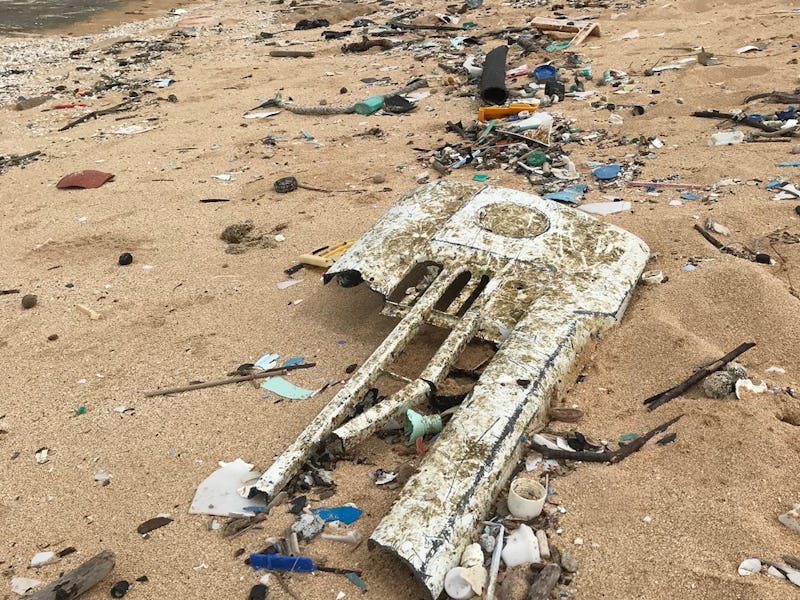Decomposing Plastics Have Been a Source of Greenhouse Gases This Whole Time
Ugh.

No. On top of all the other bad things we can attribute to plastics pollution (the damage to marine life, the leaching of toxic chemicals into the environment, and making gross and unsightly beaches, etc.), a team at the University of Hawai’i at Manoa’s Center for Microbial Oceanography has found one more: Plastics are releasing potent greenhouse gases, including methane and ethylene, into the atmosphere at an alarming rate. (Is there any other kind of rate?)
Worse still, of the seven kinds of plastic tested in the new study, published Wednesday in PLOS One — polycarbonate, acrylic, polypropylene, polyethylene terephthalate, polystyrene, high-density polyethylene (HDPE) and low-density polyethylene (LDPE) — the worst offender was also the most commonly used. Great.
“We discovered the LDPE, low-density polyethylene, is the type of plastic producing the most gases,” lead author Sarah-Jeanne Royer, a post-doctoral scholar at the Center for Microbial Oceanography: Research and Education (C-MORE) tells Inverse. “Unfortunately, this is most discarded plastic in the world. This is the most used plastic in the world as well.”
LDPE is the real cheap stuff, the web-like plastic sacks you use to protect vegetables that you’re going to wash anyway. It’s also the key ingredient in plastic bottles, playground slides, and six-pack rings. Many Americans have an intimate relationship with this material. As Radiohead once sang, “Plastic bag, middle class, Polyyyyethyleeeeeene.”
Lead author Sarah-Jeanne Royer of the Center for Microbial Oceanography: Research and Education (C-MORE) with microplastic pollution at Kamilo Point on Hawaii Island.
The global demand for polyethylene resins was about 99.6 million metric tons in 2018, according to a report from the market-research firm Freedonia Group. That’s a four percent increase over the previous year, in what Royer and her colleagues worry is a steady rise.
“Plastic represents a source of climate-relevant trace gases that is expected to increase as more plastic is produced and accumulated in the environment,” as the paper’s senior author, University of Hawai’i oceanographer David Karl, put it in a statement. “This source is not yet budgeted for when assessing global methane and ethylene cycles, and may be significant.”
This isn’t the end of the bad news, sadly. Karl, Royer, and their team are still studying this phenomena, which Royer says she was surprised no one else had thought to do yet.
“I even did some tests with CO2 — and CO2 is also being produced,” Royer says, “but this is not being discussed in the paper. That will be for another publication.”
In other words, there’s yet more evidence that we’re only barely beginning to understand the scope of what’s causing climate change, and what we’ll have to do to address it.